How to Propagate Lavender: A Step-by-Step Guide
Lavender is a popular herb known for its fragrant aroma and beautiful purple flowers. It is a versatile plant that can be used for culinary, medicinal, and decorative purposes. Propagating lavender is a simple and rewarding process that can be done by anyone, regardless of their gardening experience.
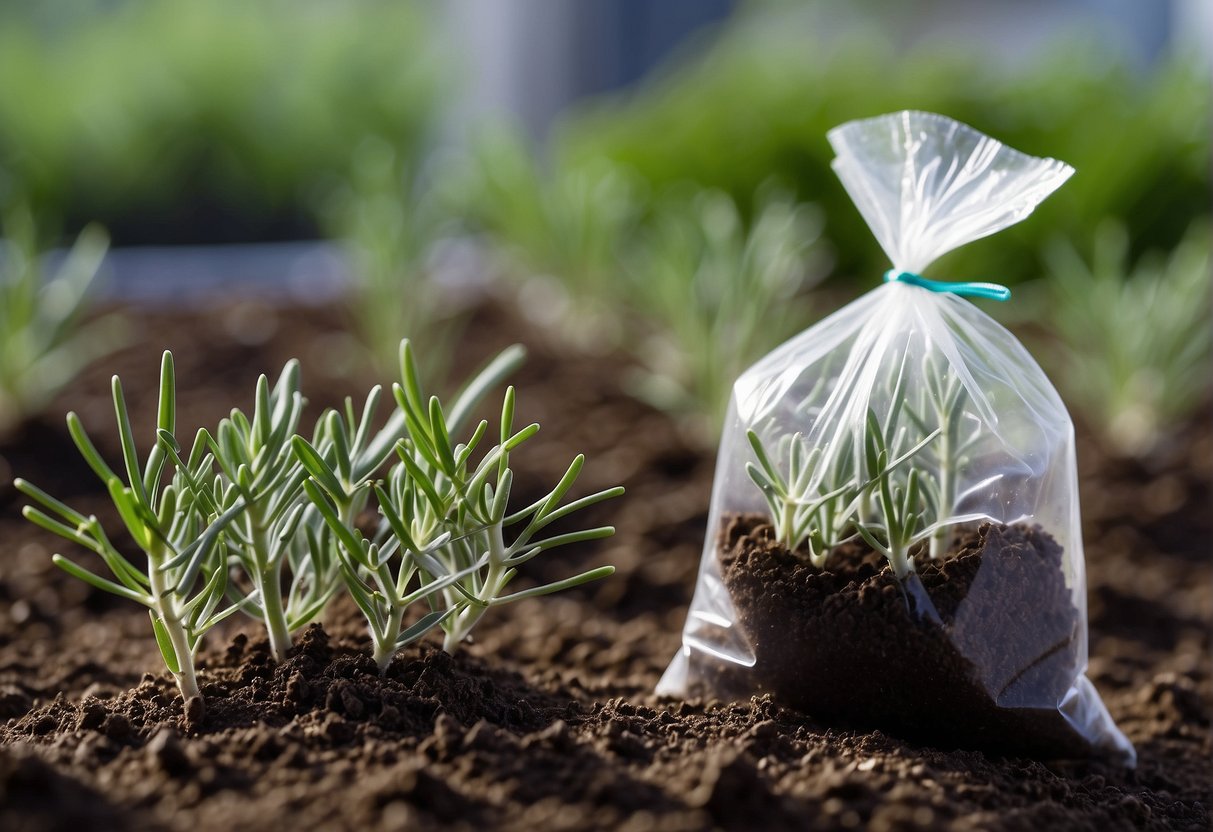
To propagate lavender, one must first understand the different methods available. There are three main ways to propagate lavender: through seed, cuttings, or layering. Each method has its advantages and disadvantages, and the choice of method will depend on the gardener’s preferences and resources.
In this article, we will explore the different methods of propagating lavender and provide step-by-step instructions on how to successfully propagate this beautiful herb. Whether you are a seasoned gardener or a beginner, this guide will equip you with the knowledge and skills needed to propagate lavender and enjoy its beauty and benefits in your garden.
Understanding Lavender Propagation
Lavender is a popular herb that is known for its fragrant aroma and beautiful flowers. It is also relatively easy to propagate, making it a great choice for gardeners who want to grow their own plants. In this section, we will discuss the different types of lavender cuttings and the best time to propagate lavender.
Types of Lavender Cuttings
There are two main types of lavender cuttings: softwood and hardwood. Softwood cuttings are taken from new growth, while hardwood cuttings are taken from older, woody stems.
Softwood cuttings are generally easier to root and will produce new plants faster than hardwood cuttings. However, hardwood cuttings are more likely to produce a plant that is true to the parent plant.
When taking cuttings, it is important to use clean, sharp scissors or pruning shears to avoid damaging the plant. Cuttings should be taken from healthy, disease-free plants.
Best Time to Propagate Lavender
The best time to propagate lavender is in the spring or fall. In the spring, take cuttings from new growth that has not yet flowered. In the fall, take cuttings from semi-hardwood stems that have finished flowering.
When propagating lavender, it is important to keep the cuttings moist and in a warm, sunny location. Covering the cuttings with a plastic bag or clear plastic container can help to maintain moisture levels and increase the chances of success.
In conclusion, understanding the different types of lavender cuttings and the best time to propagate lavender can help gardeners successfully grow their own plants. With a little knowledge and some patience, anyone can enjoy the beauty and fragrance of this wonderful herb.
Preparing for Propagation
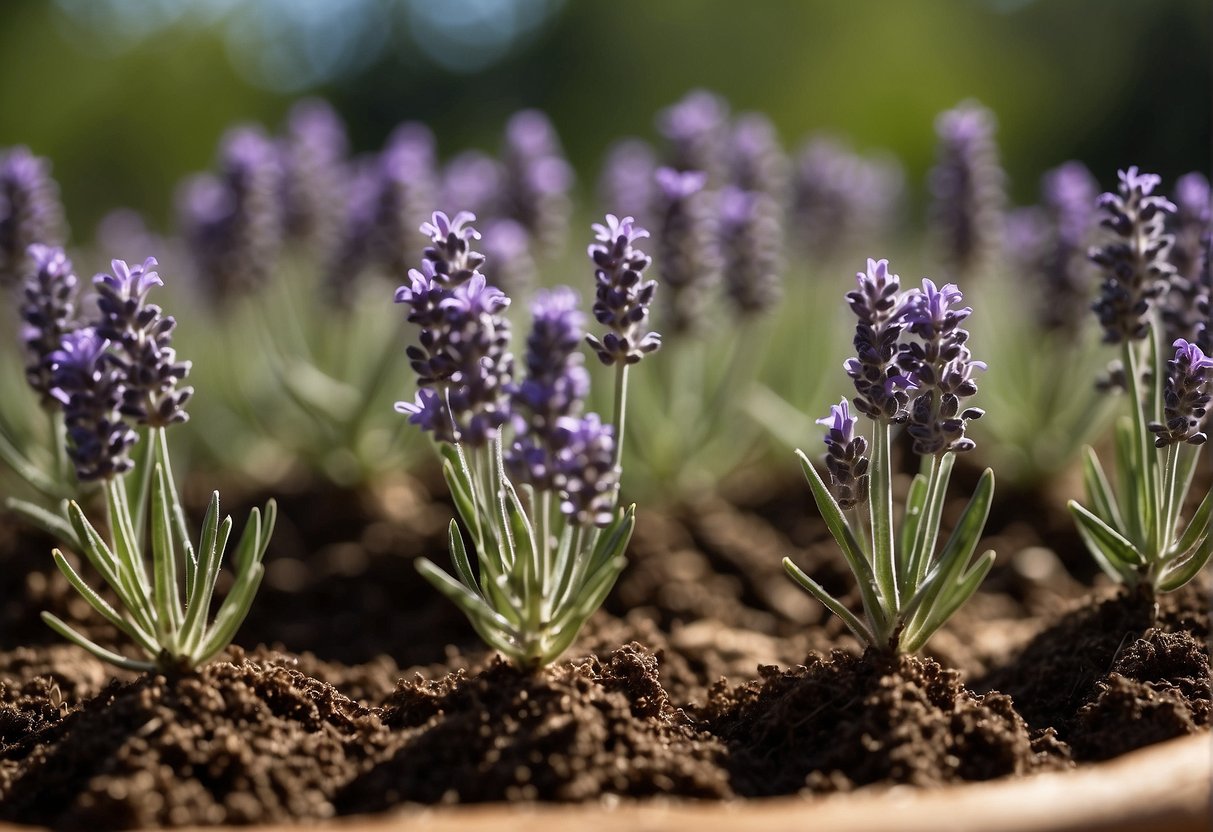
Selecting the Mother Plant
Before propagating lavender, it is important to select a healthy plant with no signs of disease or stress. Choose a plant that is at least one year old and has a strong, sturdy stem. Look for a plant that has a good shape and size, as well as a strong fragrance.
Gathering Tools and Materials
To propagate lavender, you will need a few tools and materials. First, you will need pruning shears to take cuttings from the mother plant. It is important to use sharp, clean pruning shears to prevent damage to the plant.
Next, you will need rooting hormone to help the cuttings develop roots. Rooting hormone powder is a popular choice, but there are also liquid and gel options available. Choose a rooting hormone that is specifically formulated for herbaceous plants like lavender.
You will also need a growing medium for the cuttings to root in. A mixture of perlite and vermiculite is a good choice, as it provides good drainage and aeration. Potting soil can also be used, but it should be mixed with perlite or vermiculite to improve drainage.
Finally, you will need a plastic bag to create a humid environment for the cuttings. This helps to prevent moisture loss and encourages root development. A clear plastic bag works best, as it allows light to pass through and helps to keep the temperature consistent.
Propagation Techniques
Lavender is a popular herb that can be propagated through various techniques. In this section, we will discuss three common methods of propagating lavender: Stem Cutting Method, Layering Method, and Growing from Seeds.
Stem Cutting Method
The stem cutting method is the most common way to propagate lavender. It involves taking a blossom-free stem from a mature lavender plant and rooting it in a suitable medium. The stem should be around 3-4 inches long and should be cut from the parent plant using a sharp, sterilized knife.
Once the stem is cut, remove the lower leaves and dip the cut end into rooting powder. Then, plant the stem into a pot filled with a mixture of peat moss and seed starting mix. Keep the soil moist and place the pot in a warm and bright location. The stem should root in about 2-3 weeks.
Layering Method
The layering method involves bending a low-growing branch of a mature lavender plant and burying it in soil. The branch should be bent and buried in a way that only the tip of the branch is exposed.
After a few weeks, roots will start to develop from the buried part of the branch. Once the roots are established, the branch can be cut from the parent plant and transplanted to a new location.
Growing from Seeds
Growing lavender from seeds is another way to propagate this herb. To grow lavender from seeds, sow the seeds in a pot filled with a mixture of peat moss and seed starting mix. Keep the soil moist and place the pot in a warm and bright location.
The seeds should germinate in about 2-3 weeks. Once the seedlings are large enough, they can be transplanted to a larger pot or to a garden bed.
Overall, these three propagation techniques are effective ways to propagate lavender. With the right tools and techniques, anyone can successfully propagate lavender and enjoy its beauty and fragrance in their home or garden.
Caring for New Lavender Plants
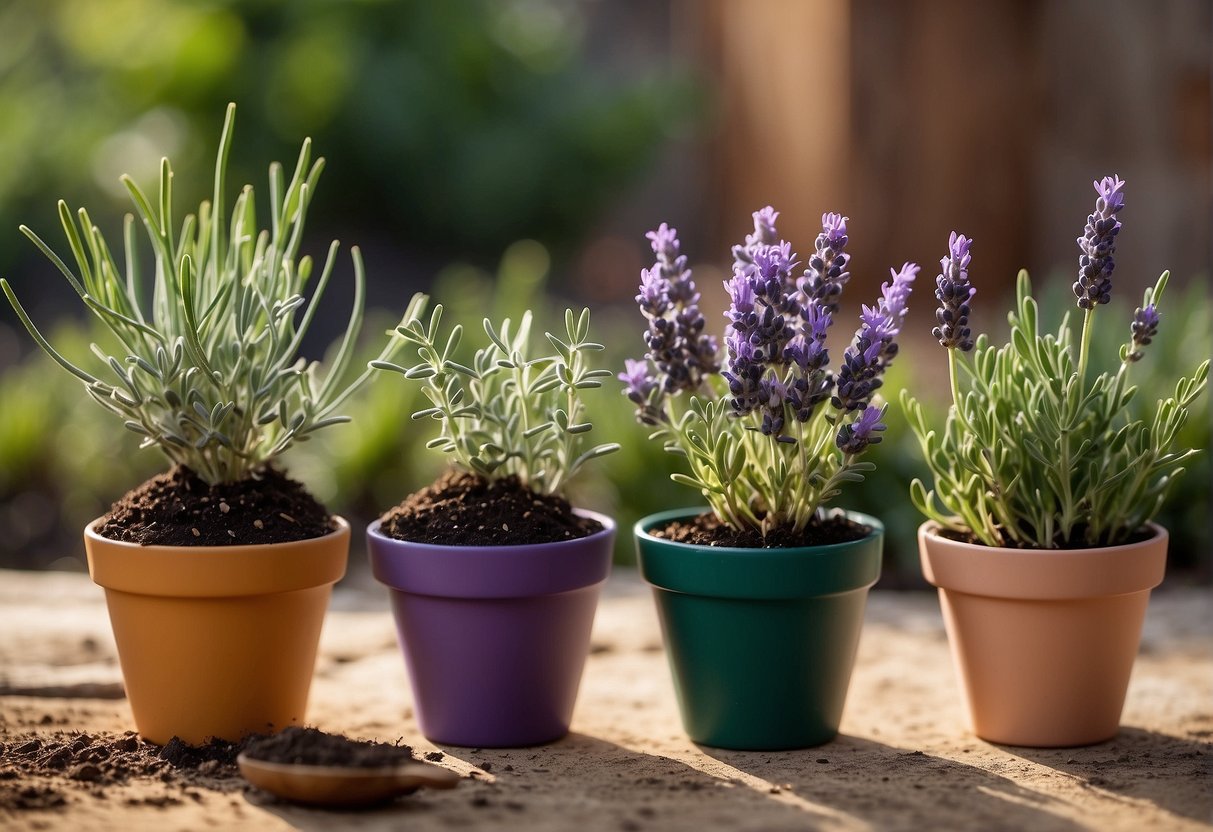
After successfully propagating lavender, it is important to take care of the new plants to ensure their healthy growth. This section outlines the necessary steps to care for new lavender plants.
Watering and Feeding
Newly rooted lavender plants require adequate water and nutrients to establish themselves. It is important to keep the soil moist, but not waterlogged, during the first few weeks after planting. Once the plants are established, reduce watering frequency to prevent root rot.
Feeding lavender plants with a balanced fertilizer every four to six weeks during the growing season can help promote healthy growth. Avoid over-fertilizing as it can lead to excessive foliage growth instead of flower production.
Managing Sunlight and Temperature
Lavender plants thrive in full sunlight, but during the first few weeks after planting, it is best to keep them in indirect sunlight to prevent wilting. Gradually introduce them to full sunlight over a period of two to three weeks.
Lavender plants prefer warm temperatures, but they can tolerate cooler temperatures as well. During the winter months, it is important to protect the plants from frost and freezing temperatures.
Transplanting and Potting Up
After the lavender plants have outgrown their current pots, it is time to transplant them into a larger pot. Choose a pot that is 1-2 sizes larger than the current pot and fill it with well-draining soil mix.
When transplanting, be gentle with the roots to prevent damage. Water the plant thoroughly after transplanting and place it in indirect sunlight until it has fully recovered.
By following these simple steps, one can ensure the healthy growth of newly propagated lavender plants.
Troubleshooting Common Issues
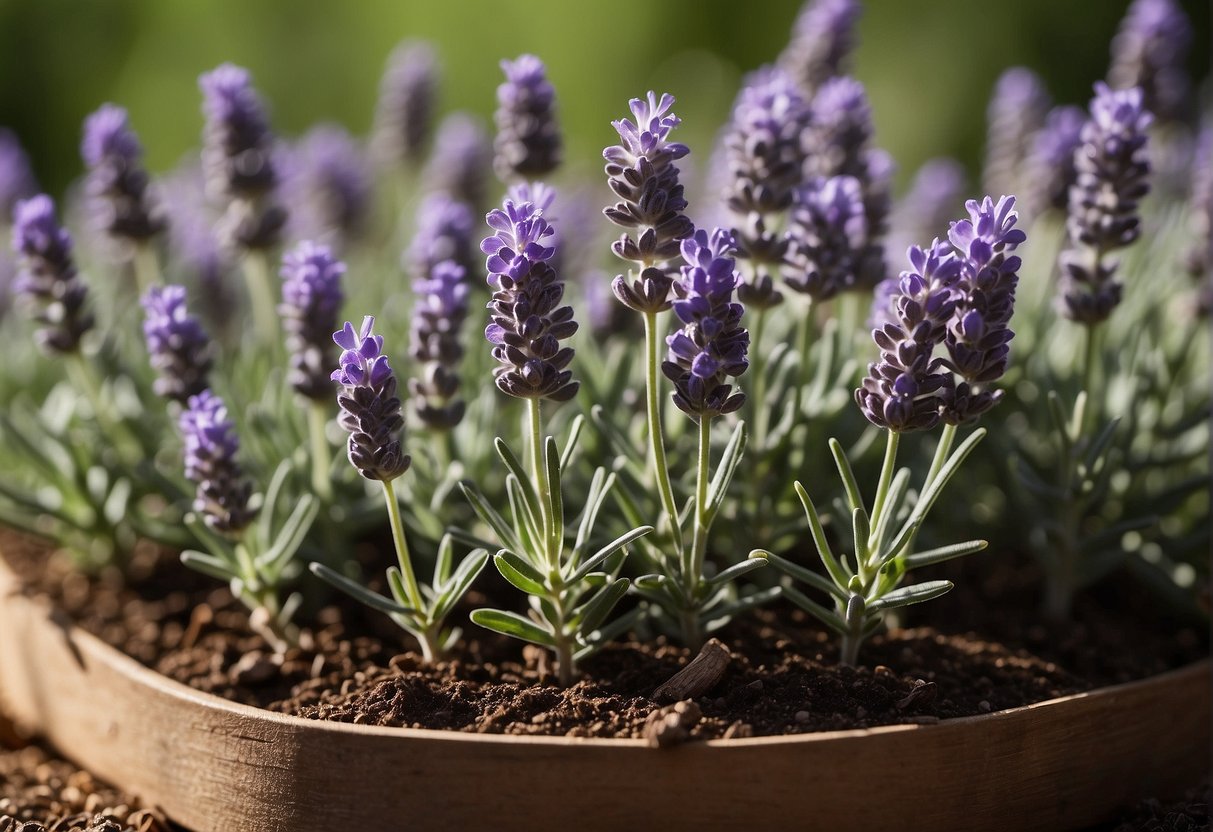
Pest and Disease Management
Lavender plants are susceptible to pests and diseases, which can affect their growth and development. The most common pests that attack lavender plants are aphids, spider mites, and whiteflies. These pests can be controlled using insecticidal soap or neem oil. It is important to spray the plants thoroughly, covering both the upper and lower surfaces of the leaves.
Diseases that affect lavender plants include root rot, powdery mildew, and leaf spot. Root rot is caused by overwatering and poor drainage, while powdery mildew and leaf spot are fungal diseases that thrive in humid conditions. To prevent these diseases, avoid overwatering and make sure the plants have good air circulation. If the plants do get infected, remove the affected parts and treat with a fungicide.
Addressing Poor Root Development
Lavender plants require well-draining soil to prevent root rot and promote healthy root development. If the soil is too heavy or has poor drainage, the roots may become waterlogged, which can lead to root rot. To address poor root development, it is important to improve the soil quality by adding organic matter such as compost or aged manure.
Another common issue that affects root development is resistance to transplanting. Lavender plants have a sensitive root system and may not tolerate being transplanted well. To avoid this issue, it is recommended to propagate lavender by taking stem cuttings rather than transplanting mature plants. This will help to ensure that the plants have a healthy root system and are more resistant to transplant shock.
Frequently Asked Questions
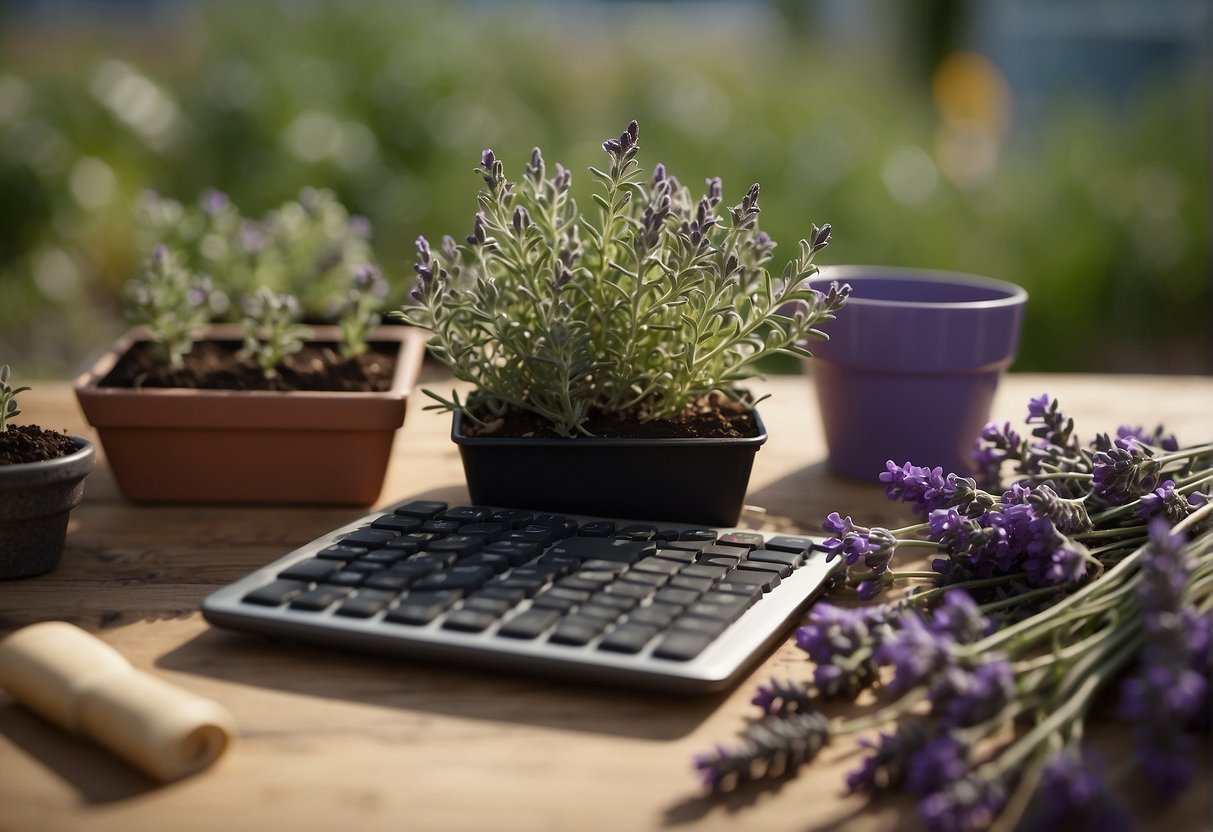
What is the best method to propagate lavender in water?
The best method to propagate lavender in water is by taking a cutting from a healthy and mature plant. Cut a stem that is about 4-6 inches long and remove the lower leaves. Place the cutting in a jar of water and make sure that the water level is below the leaves. Change the water every few days to prevent the growth of bacteria. After a few weeks, the cutting should develop roots and can be transplanted to soil.
Can lavender be propagated without using rooting hormone, and if so, how?
Yes, lavender can be propagated without using rooting hormone. Simply take a cutting from a healthy and mature plant, remove the lower leaves, and plant it in a pot with well-draining soil. Keep the soil moist and place the pot in a bright, sunny location. The cutting should develop roots in a few weeks.
What are the steps to successfully grow lavender from seeds?
To successfully grow lavender from seeds, start by planting the seeds in a pot with well-draining soil. Cover the pot with plastic wrap to create a greenhouse effect and keep the soil moist. After the seeds germinate, remove the plastic wrap and place the pot in a bright, sunny location. Make sure to keep the soil moist but not waterlogged. When the seedlings have grown a few inches tall, transplant them to individual pots or to a larger container.
What is the typical timeframe for lavender cuttings to establish roots?
The typical timeframe for lavender cuttings to establish roots is 2-4 weeks. However, this can vary depending on the environmental conditions and the health of the cutting.
How should one take softwood cuttings from a lavender plant?
To take softwood cuttings from a lavender plant, look for new growth that is still soft and pliable. Cut a stem that is about 4-6 inches long and remove the lower leaves. Dip the cut end of the stem in rooting hormone and plant it in a pot with well-draining soil. Keep the soil moist and place the pot in a bright, sunny location. The cutting should develop roots in a few weeks.
During which month is it ideal to take cuttings from a lavender plant?
It is ideal to take cuttings from a lavender plant in the spring or early summer when the plant is actively growing. This will give the cutting the best chance of developing roots and growing into a healthy plant.

